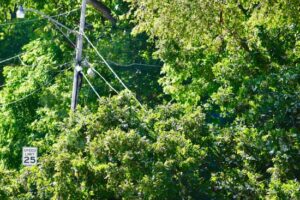Be Food Safe Prepared During Power Outages
go.ncsu.edu/readext?818583
en Español / em Português
El inglés es el idioma de control de esta página. En la medida en que haya algún conflicto entre la traducción al inglés y la traducción, el inglés prevalece.
Al hacer clic en el enlace de traducción se activa un servicio de traducción gratuito para convertir la página al español. Al igual que con cualquier traducción por Internet, la conversión no es sensible al contexto y puede que no traduzca el texto en su significado original. NC State Extension no garantiza la exactitud del texto traducido. Por favor, tenga en cuenta que algunas aplicaciones y/o servicios pueden no funcionar como se espera cuando se traducen.
Português
Inglês é o idioma de controle desta página. Na medida que haja algum conflito entre o texto original em Inglês e a tradução, o Inglês prevalece.
Ao clicar no link de tradução, um serviço gratuito de tradução será ativado para converter a página para o Português. Como em qualquer tradução pela internet, a conversão não é sensivel ao contexto e pode não ocorrer a tradução para o significado orginal. O serviço de Extensão da Carolina do Norte (NC State Extension) não garante a exatidão do texto traduzido. Por favor, observe que algumas funções ou serviços podem não funcionar como esperado após a tradução.
English
English is the controlling language of this page. To the extent there is any conflict between the English text and the translation, English controls.
Clicking on the translation link activates a free translation service to convert the page to Spanish. As with any Internet translation, the conversion is not context-sensitive and may not translate the text to its original meaning. NC State Extension does not guarantee the accuracy of the translated text. Please note that some applications and/or services may not function as expected when translated.
Collapse ▲ August and September can bring storms like Fred and Ida which result in power outages. Sometimes it means we can be without power for a significant time. These power outages can lead to food safety concerns. It is best to be prepared before they happen. Here are some tips to do just that.
August and September can bring storms like Fred and Ida which result in power outages. Sometimes it means we can be without power for a significant time. These power outages can lead to food safety concerns. It is best to be prepared before they happen. Here are some tips to do just that.
How to Prepare for Power Outage
- Make sure you have thermometers in both your refrigerator and your freezer. It is good to also have a tip-sensitive digital food thermometer to check the temperatures of foods before you eat them.
- Have a supply of bottled water to use if the water system are impacted by the storms and you have a boil water advisory or if your well is affected. Use this water for brushing teeth, cooking, cleaning and even for your pets.
- If you have enough time before the storm, prepare coolers and purchase extra ice or dry ice to hold foods that need to stay cold.
- Stock up on foods that can be eaten cold or heated up on outdoor grills.
- Dairy – hard cheeses (cheddar, parmesan, romano), individually packaged cultured dairy products, like yogurt and sour cream, individual cheese sticks, and shelf stable milk boxes and alternative milk in boxes.
- Proteins – hard boiled air-cooled eggs, shelf stable dry fermented meats such as pepperoni, individually packaged nuts or seed butters, canned meats or seafood.
- Grains and snacks – bread, rolls, buns, muffins, baked goods, crackers, pretzels, popcorn and granola bars
- Produce – whole fruits and vegetables, baby carrots, grapes, apples, bananas, berries, cherry tomatoes, individually wrapped applesauce or fruit cups, canned applesauce or fruits.
- Other shelf stable foods – soups, stews, chilis and pastas that are ready to eat, fruits and vegetables and fruit and vegetable juices, tuna, salmon, chicken, pork and beans.
You can find other information on preparing for power outages and other disasters at Safe Plates Disaster Preparedness, information is in English and Spanish.




